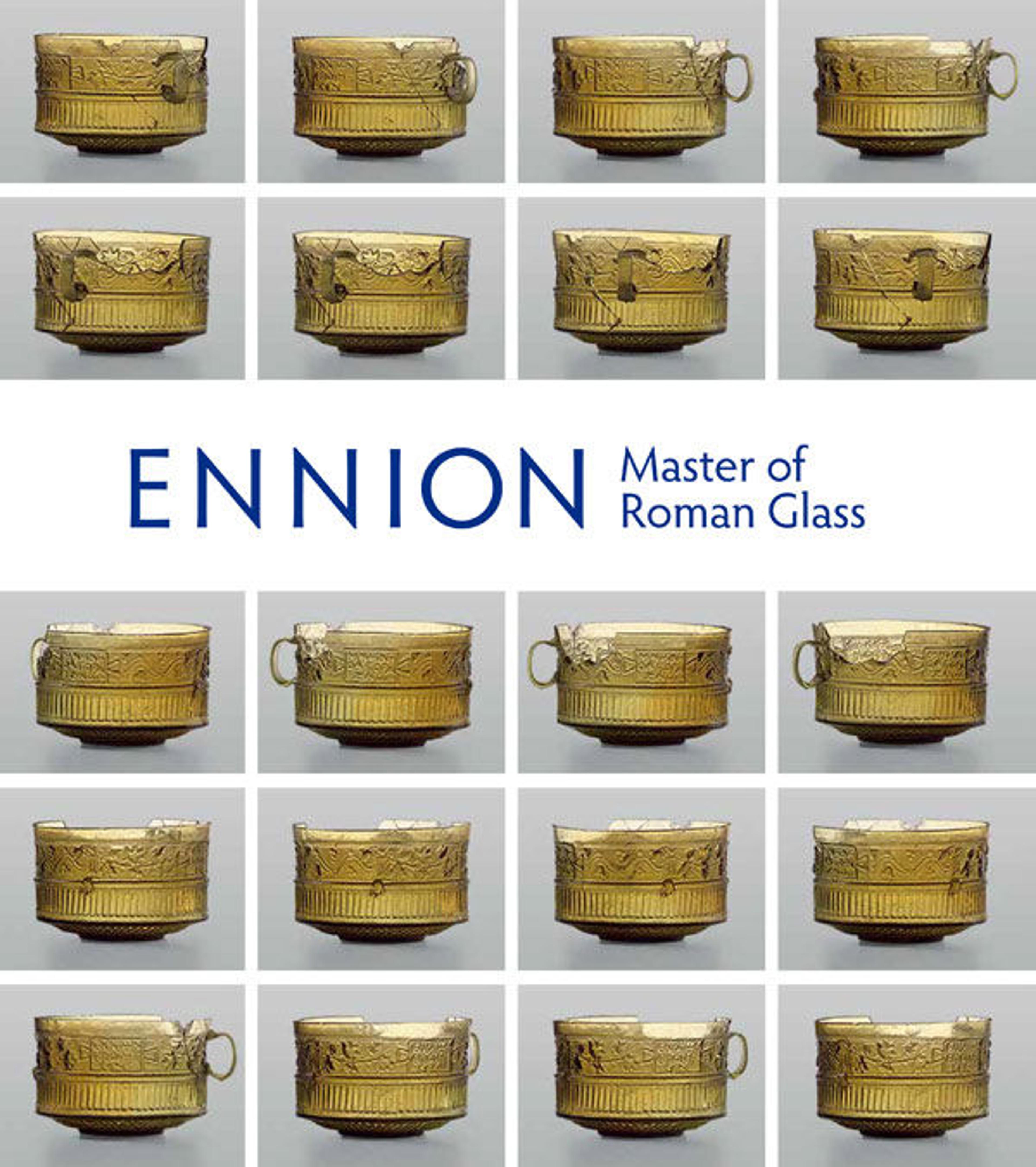«Ennion: Master of Roman Glass is the Met's first publication devoted exclusively to Ennion, whose glass products traveled across the Roman Empire in the first century A.D. I discussed the book, Ennion's work, and the connections between the ancient and modern world with the curator of the exhibition and author of the catalogue, Christopher S. Lightfoot.»
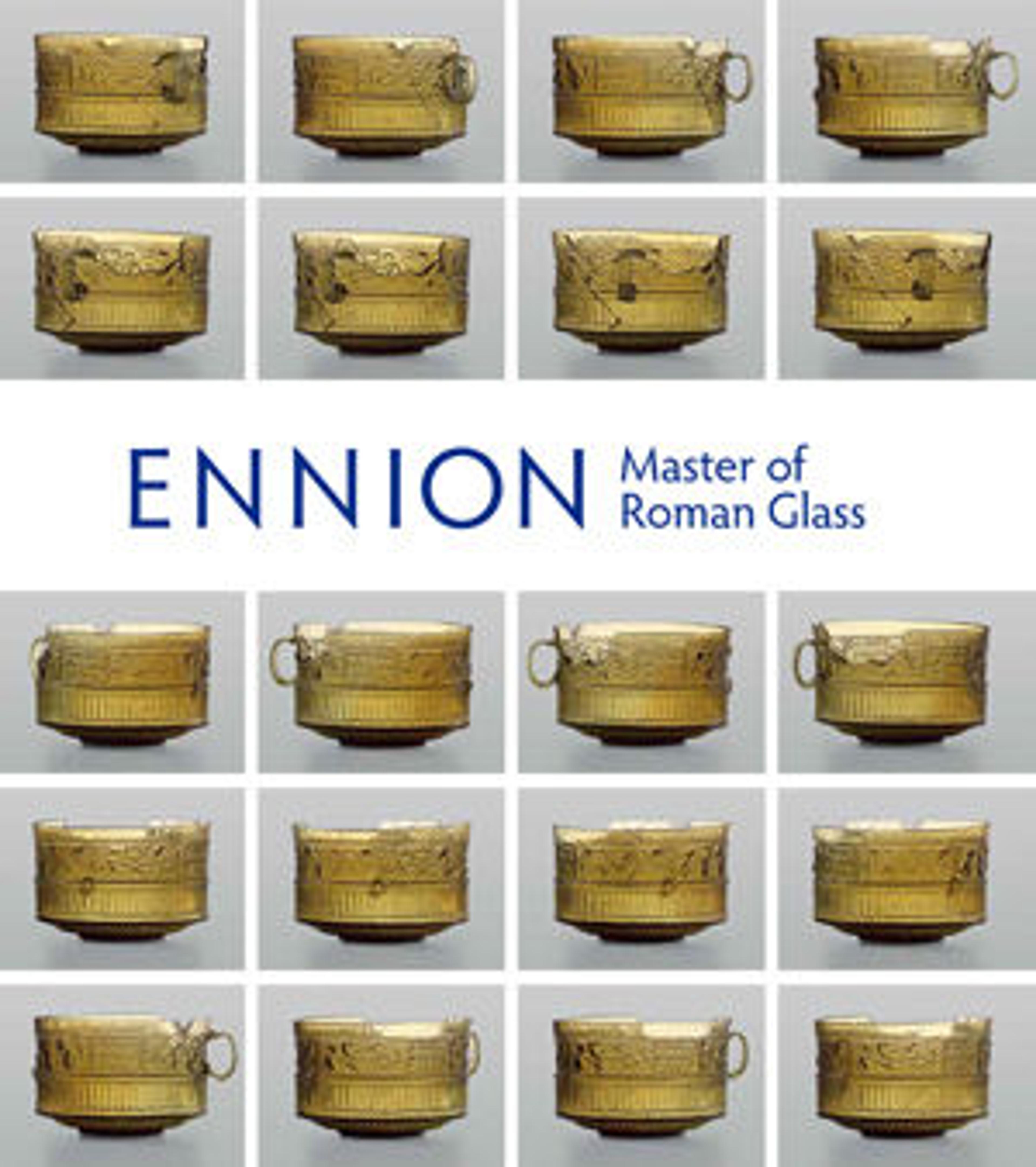
Ennion: Master of Roman Glass, by Christopher S. Lightfoot with contributions from Zrinka Buljević, Yael Israeli, Karol B. Wight, and Mark T. Wypyski, features 123 full-color illustrations and is available at The Met Store and MetPublications.
Rachel High: Ennion's works are some of the finest known examples of ancient Roman glass. How do you think he influenced the development of the medium?
Christopher Lightfoot: What Ennion did is really quite groundbreaking. He perfected the use of molds for blowing glass and making multiple copies of the same vessel. No one was able to achieve that success again with mold-blown glass. His work is remembered not just because he put his name on the molds, which allows us to identify his pieces, but because they are all so extraordinarily different from all other examples of Roman mold-blown glass.
One of the aspects that I mention in the book is the size of these objects. Most early first-century Roman glass vessels are no larger than four inches high, but Ennion's pieces are much bigger. Another topic in the book which hasn't really been discussed before is color—people tend to take color for granted when it comes to glass.
I don't know how directly you could say his works influenced the medium. It must have helped stimulate at least an awareness of glass as something that an artist or buyer could want to use and show off as an attractive alternative to silver or pottery tableware.
Rachel High: Would you say that glass was a presentational object during Ennion's time?
Christopher Lightfoot: No, these were all practical objects. I think we're all rather distracted by glass vases with flowers today, but there don't seem to be any instances of a glass vessel from antiquity with flowers in it. The only example I know of is a tombstone in Turkey which has a perfume bottle with a flower above it, but I think that's symbolic of the smell of the perfume rather than a representation of an actual flower in the bottle.

Flasks like this one were used for practical purposes and not for decoration. Hexagonal flask (amphoriskos), signed by Ennion, 1st half of 1st century A.D. Early Imperial, Julio-Claudian. Said to be from Potamia, near Golgoi, Cyprus. Glass; blown in a four-part mold; 5 5/8 x 3 1/8 x 2 13/16 in. (14.2 x 8 x 7.2 cm); diameter of rim: 1 1/2 in. (3.8 cm). The Metropolitan Museum of Art, New York, Gift of Henry G. Marquand, 1881 (81.10.224)
Rachel High: In your essay, you talk about how pottery production may have influenced the production of mold-blown glass. What are the similarities between these, and how might the two crafts have influenced each other?
Christopher Lightfoot: They influenced each other to a certain extent, but not greatly. The important thing is that Roman pottery was produced on a colossal scale when compared with anything that went before that had been wheel-made. The Romans developed molds for the mass production of both vessels and lamps.
It's quite likely that Romans got the idea of using molds for mold-blown glass from these pottery techniques, but, apart from that, the shapes and the decoration are quite different. Pottery uses a lot of figural imagery, and Ennion's glass—with the exception of one or two pieces which show some small animals and birds—doesn't depict figures at all, so the iconography is quite different. Pottery was imitating precious metal and semiprecious stone as was cameo glass, which depicts figures, but mold-blown glass does not at this point in time, not under Ennion.
However, I do suggest in the book that he may have gotten the idea of putting his name on his work from pottery, because pottery typically has the name of the owner of the factory and the name of the potter who made the mold or the pot. As I say in the book, I think Ennion did all three: he owned the workshop; made the mold; and blew the glass, which he could do because his workshop was a much smaller enterprise than a pottery factory.
Rachel High: Could you talk about the architectural iconography used on glass made by Ennion?
Christopher Lightfoot: Yes, a lot of the decoration comprises palmettes which had been used in Greek art for centuries. For example, you can see it on Attic vases from the fifth century B.C., and palmettes also decorate cornices and architraves in Hellenistic and early Roman architecture. Many of the new buildings going up in the East at the time, under rulers like Herod the Great, were copying Hellenistic and Roman styles of architecture.
However, Ennion also uses a trellis design, which is unusual, and it struck me that it may be a reflection of the eastern parts of the empire starting to use Roman building techniques. The trellis design resembles bricks lain in the opus reticulatum (network) pattern. This would have been very novel in the East, as I suspect the arch was as well. That may be from where Ennion first took the concept, and that's why I refer to it in the book.
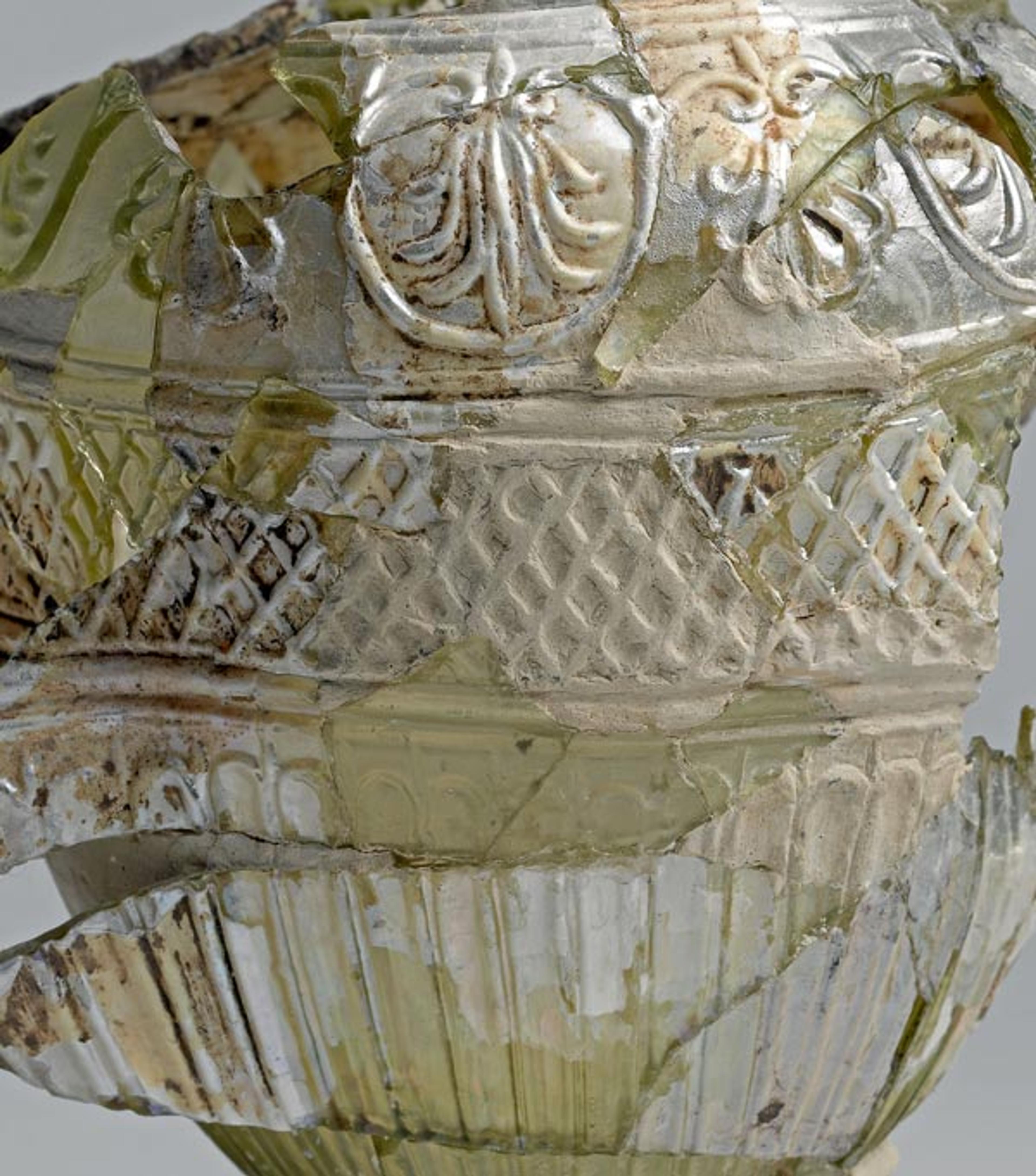
Palmettes and the opus reticulatum pattern as seen on this detail of a jug signed by Ennion. Translucent pale green with handle and pedestal foot in same color; height (including restored foot): 5 3/4 in. (14.6 cm). Israel Antiquities Authority, on permanent exhibition at The Israel Museum, Jerusalem, 1982-1105
Rachel High: You briefly wrote about ancient glass in the Summer 2001 Bulletin, but this is the Met's first publication to focus specifically on Ennion. Could you speak about how you became interested in this topic and writing this book?
Christopher Lightfoot: There are only twenty-six intact or near-intact pieces of Ennion around the world, and the Met has three of them in its collection; they are three of our star pieces of ancient glass, not just Roman glass. Bringing a large number of pieces here for the show provided the opportunity to write an academic survey of what we know about Ennion at the present time. It was nice to be able to do that because I started to learn about ancient glass from Donald Harden, and his article published in 1935 is the primary reference text that everyone cites when they talk about Ennion. It is nice to have this link across generations of scholarship.
Ennion is a fascinating subject because we know so little about him. It's always a nice challenge to write about something that we don't know much about and at least to try to set out the current state of knowledge about not only the person, but also his workshop and products. I'm very pleased to pull into the catalogue references to recent finds—particularly the ones in Croatia, which have come from excavations there over the past decade or so. I am very happy that Zrinka Buljević was willing to give me her paper for the exhibition catalogue and that I was able to include other recent finds made in Turkey.
Rachel High: What is your favorite piece by Ennion in the Met's collection, and what makes it interesting to you?
Christopher Lightfoot: Of our three pieces, the most interesting is probably the one-handled jug, because it's the only one of its kind to have survived intact. The trailed handle is different from that on other jugs in that it is in opaque white, which is very unusual for Ennion. While a lot of early mold-blown glass used opaque glass, Ennion typically did not for some unknown reason. On the cups, ivy or grape iconography is very common and there's an association with Dionysus, but the jugs don't really have that. I think they are much more architectural in their shape and decoration.
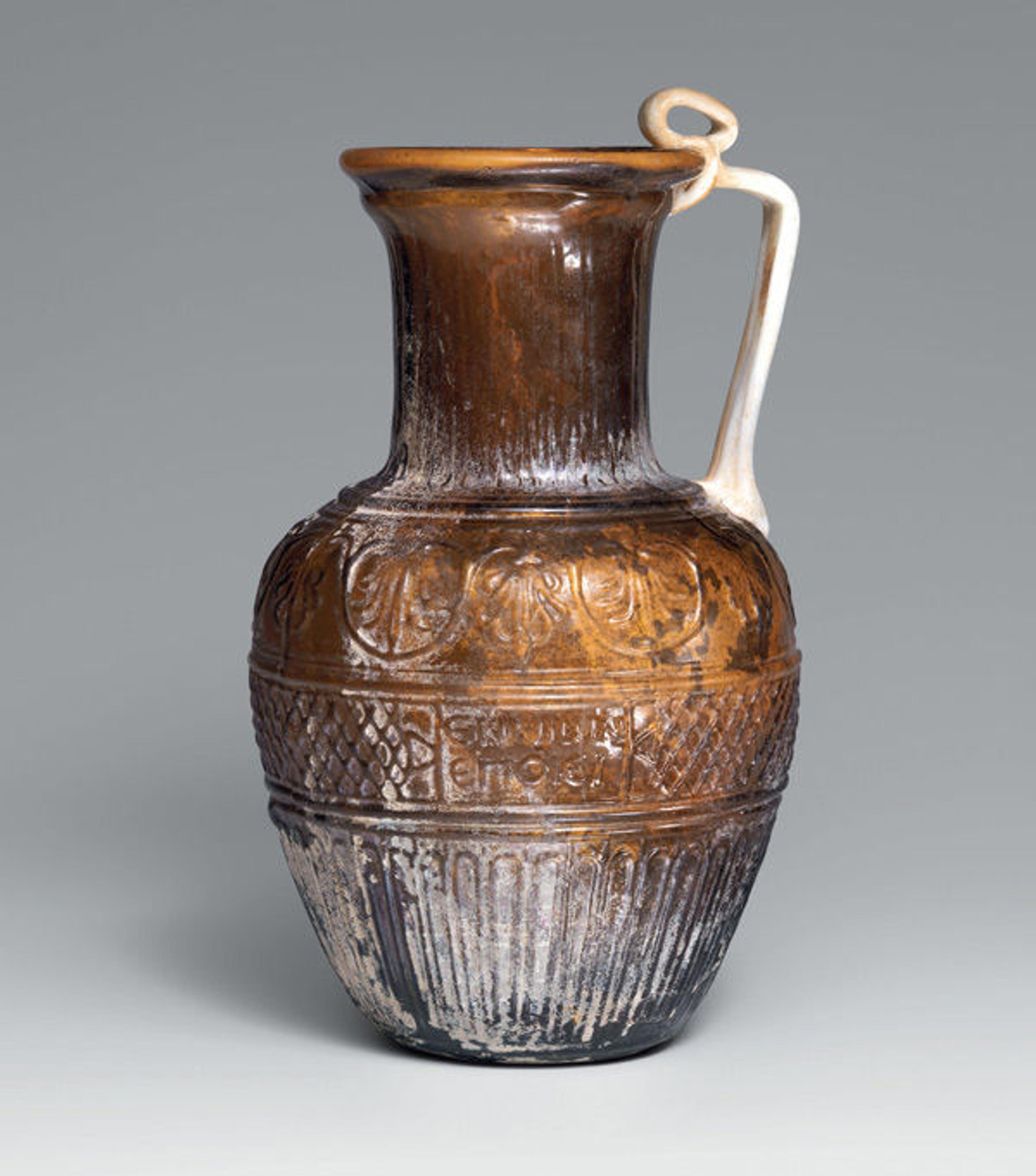
One of the Met's pieces that features an unusual opaque handle. One-handled jug, signed by Ennion, 1st half of 1st century A.D. Early Imperial, Julio-Claudian. Glass; blown in a four-part mold; 7 1/4 x 4 3/16 in. (19.1 x 10.6 cm); diameter of rim: 2 3/4 in. (7 cm). The Metropolitan Museum of Art, New York, Gift of J. Pierpont Morgan, 1917 (17.194.226)
Rachel High: How do you hope this book will contribute to the study of the history of Roman glass, and what themes or aspects of this subject matter do you see yourself exploring further in the future?
Christopher Lightfoot: As Carlos Picón states in the introduction, we hope this publication will serve as a prelude to a publication of the glass collection of the Department of Greek and Roman Art. While most of the collection was acquired nearly one hundred years ago, they've never really been properly studied or published collectively, so this is a hint of what is to come.
What I tried to focus on in both the exhibition and the book is the inscriptions. Previous publications discuss the molds, the shapes and the decoration, but not the inscriptions, so I've listed all the different variations, the changes in verb tense, and what the inscriptions might mean. I also discussed what Ennion's name, which was a very uncommon name, might have implied at the time.
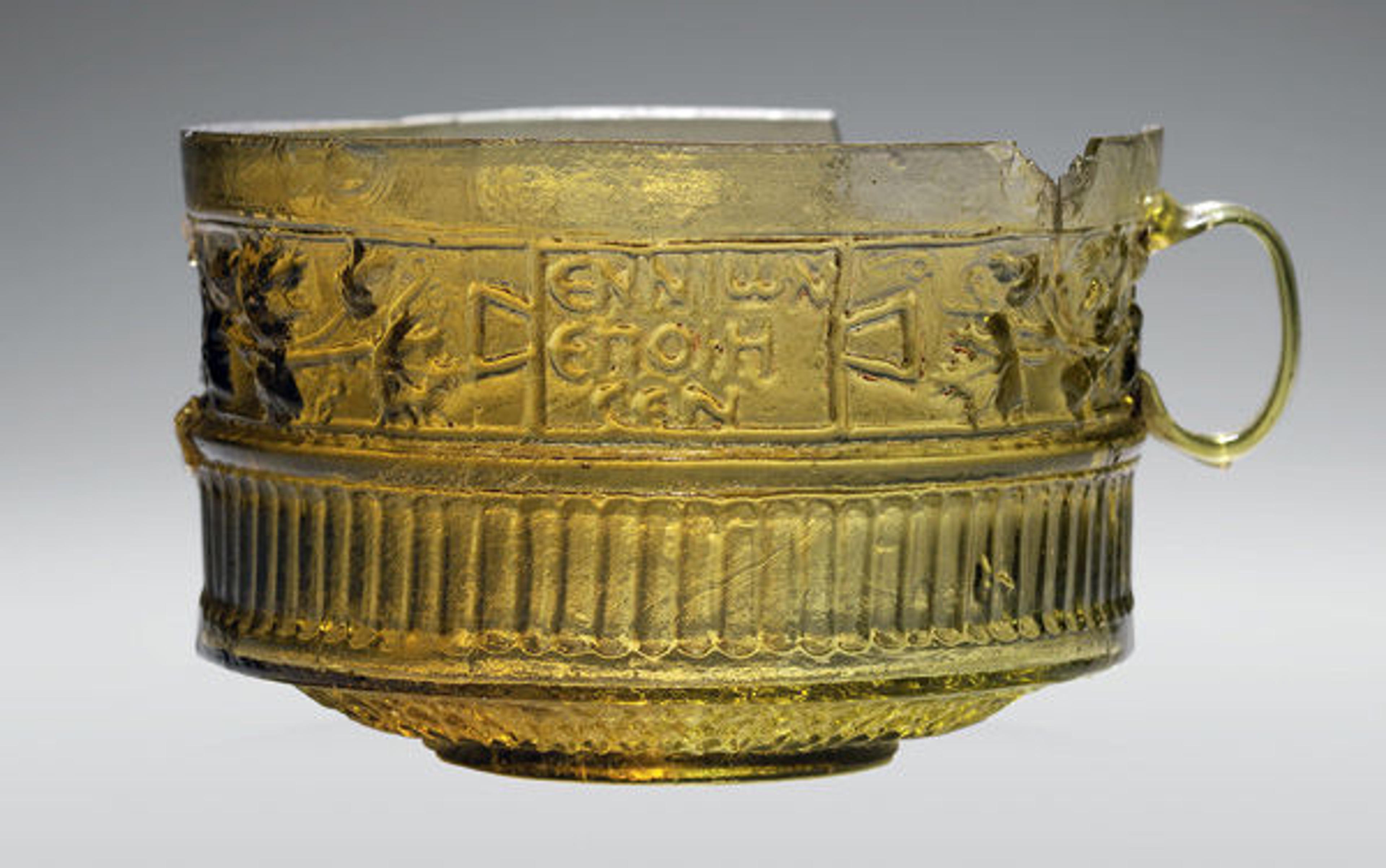
Ennion's name is seen on this cup in the Met's collection. Two-handled cup, signed by Ennion, 1st half of 1st century A.D. Early Imperial, Julio-Claudian. Glass; blown in a four-part mold; 2 7/16 x 4 3/8 in. (6.2 x 11.1 cm); diameter of rim: 3 13/16 in. (9.7 cm); diameter of foot: 1 7/8 in. (4.8 cm). The Metropolitan Museum of Art, New York, Gift of J. Pierpont Morgan, 1917 (17.194.225)
Ennion made his name into a famous label. Examples of his work have been found from the Atlantic coast of southern Spain to Crimea. He was able to exploit the Mediterranean-wide trade network to get his products to distant markets, and he wouldn't have been able to do that without the Roman Empire. Ennion was great at branding his work. I always try to see connections between the modern and the ancient world, and that's the important thing about Ennion's name: It provides a link between the ancient world and the modern world of commercial advertising.
Related Link
The Met Store: Ennion: Master of Roman Glass
